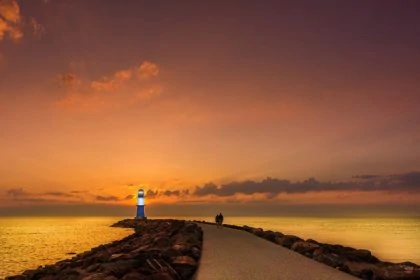The Federal Supreme Court ruled that a mosaic-like overall view of individual elements is not relevant for for determining the scope of protection of a design. A registered design must also be evaluated as an overall impression – even if its a design for a modular system.
 The focus was on the waiting benches from the modular waiting zone system “Meda Gate” of a German-Swiss group of companies that develops, manufactures and offers designer furniture. The waiting bench module series Meda Gate is protected by a number of Community designs of this group of companies, which have been registered at the Office of the European Union for Intellectual Property since September 2010. The group of companies saw these intellectual property rights infringed by the defendant, which is active in the field of contract furnishing and distributes a modular waiting bench system under the name “9000 DÉPART“. The manufacturers of the Meda Gate system sued the defendant for an injunction to cease production and use in the EU and claimed damages.
The focus was on the waiting benches from the modular waiting zone system “Meda Gate” of a German-Swiss group of companies that develops, manufactures and offers designer furniture. The waiting bench module series Meda Gate is protected by a number of Community designs of this group of companies, which have been registered at the Office of the European Union for Intellectual Property since September 2010. The group of companies saw these intellectual property rights infringed by the defendant, which is active in the field of contract furnishing and distributes a modular waiting bench system under the name “9000 DÉPART“. The manufacturers of the Meda Gate system sued the defendant for an injunction to cease production and use in the EU and claimed damages.
Stations of the courts:
- March 2017: Düsseldorf Regional Court upholds claim (14c O 95/16)
- Defendant’s appeal: the Court of Appeal dismissed the judgment of the Regional Court and dismissed the action.
- Appeal allowed: the applicant sought the restoration of the judgment of the Court of First Instance
- August 2017: Judgment of the OLG Düsseldorf (I-20 U 50/17) – the action was dismissed
- January 2019: BGH annuls OLG judgment and remits it to the Court of Appeal for a new hearing and decision, also on the costs of the appeal.
In proceedings concerning designs, the individual character and the known treasure of forms are of particular interest. This is also the case in the present case: The German court of appeal ruled that the scope of protection of the designs in dispute was only narrow because they is only a small distance from the previously known treasure of forms. Since the relevant set of shapes is very densely populated, the challenged models do not fall within the scope of protection of the designs, ruled the appeal court.
Distance to the previously known treasure of forms is relevant
The BGH rejected this decision. The scope of protection is depending on the distance between the design of the action and the previously known treasure of forms. This difference was to be determined by comparing the overall impression of the plaintiff’s design and the known designs. In order to determine the distance between the samples of the action and the previously known treasure trove of shapes, it was not necessary to compare their individual features. Rather, the respective overall impression of the opposing designs is decisive, the Federal Court of Justice ruled. However, the Court of Appeal had not made such a comparison, it obviously considered the mosaic-like comparison of individual features to be justified, since it was a modular system.
The BGH added that the scope of protection under the Community design under Article 10(1) CDR extends to any design which does not give the informed user a different overall impression. The examination required that the scope of protection of the design be determined and that its overall impression and that of the contested model be determined and compared. Both the similarities and the differences between the designs must be taken into account.
Determination of the overall impression
However, the BGH rejected two of the pleas in law: the plaintiff did not dispute with sufficient substance that the relevant range of shapes was very densely populated. Accordingly the citations were also a previously known treasure of forms.
The Geman Court of Appeal was also correct in finding that the informed user would attach considerable importance to feature 2 (“the seat shells are attached to a horizontal support at a certain distance from each other by means of two cantilevered webs which engage at the front of the seat shell”) in particular to the feature classifications of the two models. This creates the impression of a cantilever very light chair.
However, the Court of Appeal was not right by placing too high requirements on a consistent overall impression and by failing to make sufficient findings as to the similarities and similarities between the challenged design and the models of the action.
The BGH therefore overturned the judgment of the Higher Regional Court Düsseldorf and referred it back to the Court of Appeal for a new hearing and decision.
Would you also like to protect your trademark or brand?
Our lawyers are experienced in trademark and patent law, national and international law.

Source for text and pictures:
Judgment of Federal Supreme Court (BGH) on Meda Gate (in German)







Leave a Reply